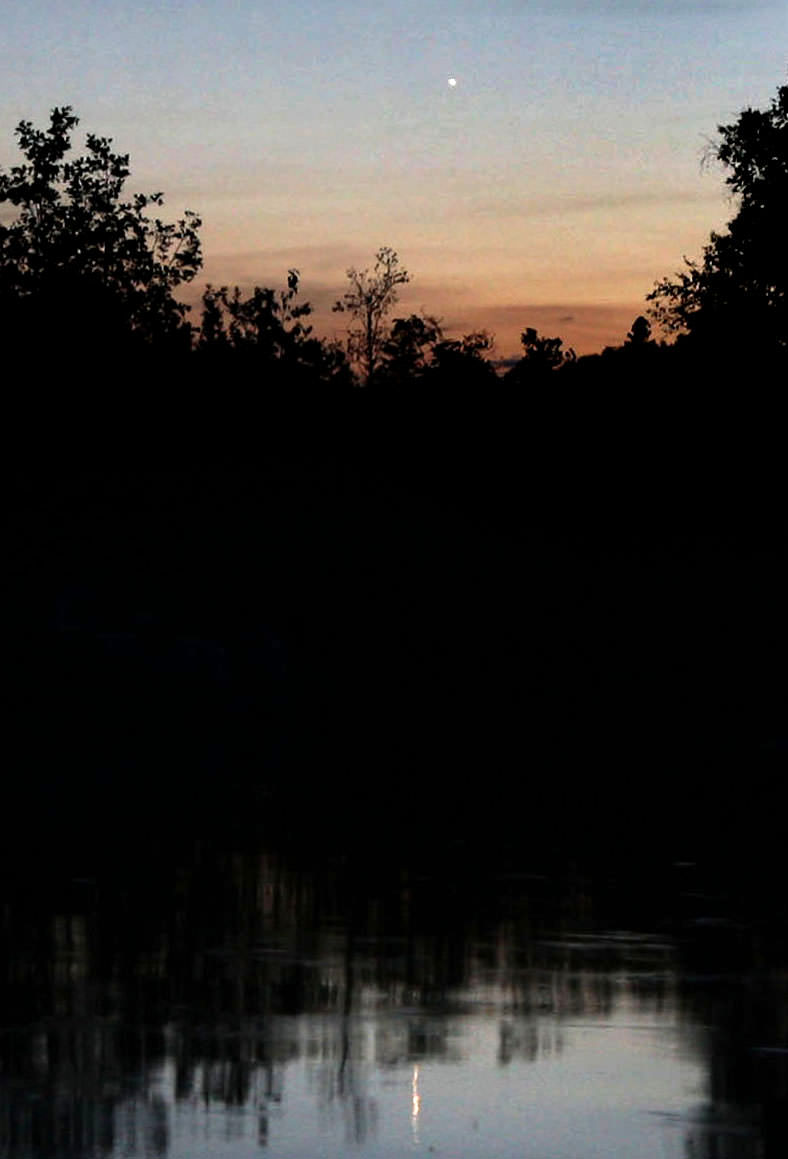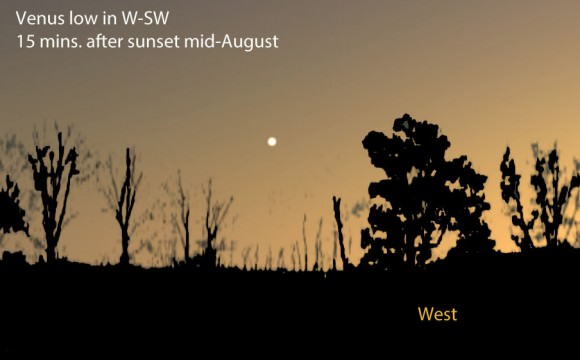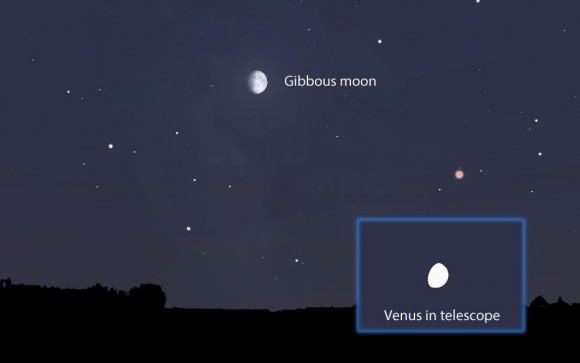Curious coincidences occur in the sky just as they do on Earth. Take tonight for instance. The moon is in gibbous phase or about 3/4 full - 78% to be exact - while Venus, which also undergoes phases identical to the moon, is likewise gibbous and 78% full.
That's just cool. If you have telescope, focus on Venus low in the western sky just after sunset and see a perfect replica in miniature of tonight's moon.
[caption id="attachment_104181" align="aligncenter" width="580"]
Look for Venus about a fist up in the west-southwest shortly after sunset. Stellarium
[/caption]
Be sure you're out early as the planet is low to begin with and drops lower in the west with each passing minute. Provided the sky is haze-free, Venus isn't difficult to spot even 5 minutes after sunset. Look about 10 degrees (one fist held at arm's length) above the west-southwest horizon.
[caption id="attachment_104182" align="aligncenter" width="580"]
The moon and Venus are coincidentally in exactly the same phase tonight - 78% gibbous. Stellarium
[/caption]
The moon shows spectacular craters and mountains, but Venus hides its equally spectacular scenery of volcanic mountains, craters and cracked plains beneath a permanent cover of sulfur-dioxide-laced clouds. Clouds are excellent reflectors of sunlight. Not only is the planet brilliant because of them but looks as white as a shiny cue ball.
[caption id="attachment_104183" align="aligncenter" width="580"]
Venus' changing position with relation to the Earth as it orbits around the sun causes it to exhibit phases like the moon. I've marked approximately where Venus is in mid-August. After gibbous, the planet will wane to half and then a crescent over the coming months as it catches up and passes the Earth. Illustration: Bob King
[/caption]
Tomorrow night the moon and Venus will go their own phase-y way, the moon fattening up toward full and Venus slowly slimming its waistline as it works its way toward the Earth. For now enjoy their temporary bond.
 Universe Today
Universe Today



